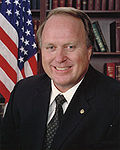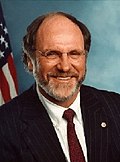Senate
Took office January 3, 2001
Took office during the 107th Congress
| State | Image | Senator | Took office | Switched party | Prior background | Birth year |
|---|---|---|---|---|---|---|
| Minnesota |  | Dean Barkley (IMN) | November 4, 2002 | Yes Appointed; replaced Paul Wellstone (DFL) | None | 1950 |
| Missouri |  | Jim Talent (R) | November 25, 2002 | Yes Defeated Jean Carnahan (D) | U.S. House of Representatives [h] Missouri House of Representatives | 1956 |
| Texas |  | John Cornyn (R) | December 2, 2002 | No Open seat; replaced Phil Gramm (R) | Texas Attorney General Texas Supreme Court | 1952 |
| Alaska |  | Lisa Murkowski (R) | December 20, 2002 | No Appointed; replaced Frank Murkowski (R) | Alaska House of Representatives | 1957 |










